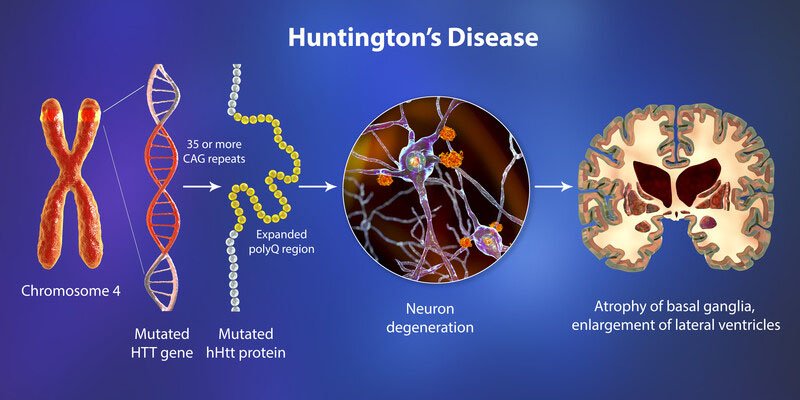Chorea, a hallmark symptom of Huntington’s disease (HD), manifests as involuntary, abrupt, and unpredictable movements. These irregular motions significantly impair the quality of life for those affected. This article provides a detailed exploration of the link between chorea and Huntington’s disease, offering insights into its mechanisms, diagnostic approaches, and treatment options.

What Is Chorea?
Chorea refers to a neurological condition characterized by rapid, involuntary movements affecting the limbs, face, and torso. These movements, which resemble fidgeting or dancing, are a key symptom of Huntington’s disease, a progressive neurodegenerative disorder.
Causes of Chorea in Huntington’s Disease
Huntington’s disease is caused by a genetic mutation in the HTT gene, leading to the production of an abnormal huntingtin protein. This faulty protein disrupts normal cellular processes in the brain, particularly in the basal ganglia, a region responsible for coordinating movement. The resulting neuronal damage triggers the uncontrolled motor activity characteristic of chorea.
Key Pathophysiological Features:
- Neurodegeneration in the Basal Ganglia: Loss of medium spiny neurons.
- Excitotoxicity: Overactivation of neurons caused by excess glutamate.
- Impaired Neurotransmitter Balance: Altered dopamine, GABA, and acetylcholine levels contribute to motor dysfunction.
Symptoms of Chorea in Huntington’s Disease
The severity and progression of chorea vary among individuals. Common symptoms include:
- Motor Symptoms: Jerky, unpredictable movements, difficulty with coordination, and abnormal gait.
- Facial Movements: Grimacing, tongue protrusion, or irregular jaw movements.
- Non-Motor Symptoms: Cognitive decline, psychiatric disturbances, and changes in mood or behavior.
Diagnostic Approach
Early diagnosis of chorea associated with Huntington’s disease is crucial for effective management. Diagnostic steps include:
1. Clinical Evaluation
- Detailed patient history to identify familial patterns of Huntington’s disease.
- Neurological examination to assess movement disorders.
2. Genetic Testing
- Testing for the HTT gene mutation confirms the diagnosis. A repeat of over 40 CAG sequences in the gene is definitive for Huntington’s disease.
3. Imaging Studies
- MRI or CT scans reveal brain atrophy, particularly in the caudate nucleus and putamen.
Treatment Options for Chorea in Huntington’s Disease
While there is no cure for Huntington’s disease, various therapeutic approaches aim to alleviate chorea and improve quality of life.
1. Medications
a. Tetrabenazine and Deutetrabenazine
- FDA-approved drugs that reduce dopamine activity, mitigating chorea.
b. Antipsychotics
- Haloperidol and olanzapine may help control severe movements.
c. Anticonvulsants
- Valproate or clonazepam can be used for adjunctive management.
2. Physical and Occupational Therapy
- Helps patients maintain motor function and adapt to daily activities.
3. Lifestyle Modifications
- Regular exercise, balanced nutrition, and stress management play supportive roles.
4. Surgical Options
- Deep brain stimulation (DBS) is an experimental approach for refractory cases of chorea.
Prognosis and Outlook
Huntington’s disease is progressive, and chorea typically worsens over time. However, advancements in research are fostering hope for disease-modifying therapies. Early intervention and comprehensive care can significantly improve quality of life for patients.